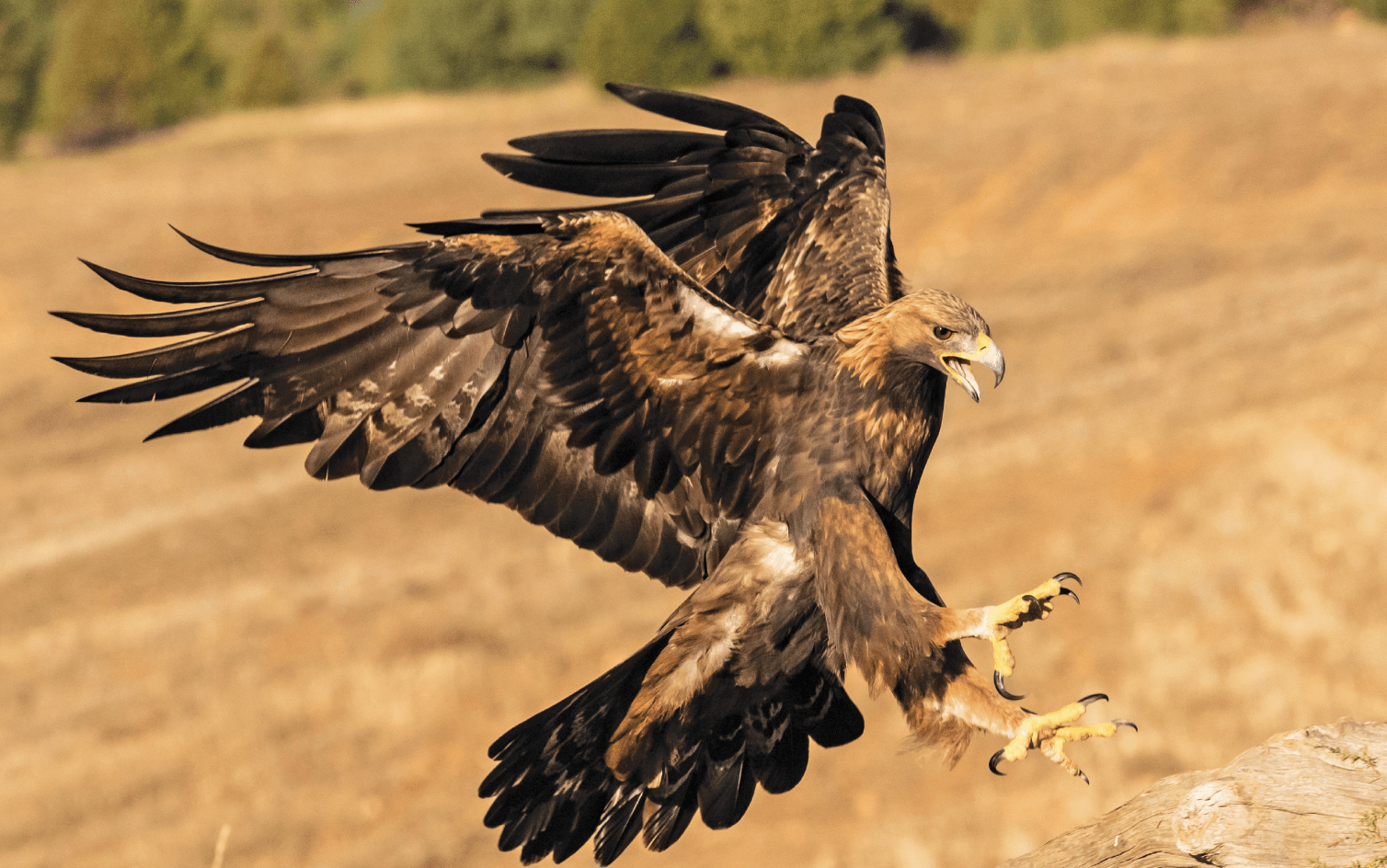
By Jim Knox
“Is that an eagle, dad?” my son excitedly asked one Thanksgiving morning, in between passes of the football in our backyard.
“Maybe. Let’s take a closer look,” I responded, walking over to him so we could look together.
“Do you think it’s a Golden Eagle?” he asked.
“Well, eagle sightings are always really cool, but a Golden would be amazing,” I answered, thinking it was so cute that my 6-year-old thought he saw an especially rare raptor in the sky above.
We looked together at the large brownish raptor riding thermals hundreds of feet above. The sky was clear and blue giving us great contrast. When the young bird angled overhead the white patches on the underside of its wings and tail flashed in the bright sunlight, confirming its identity. My son had indeed spotted a rare Golden Eagle in the skies above Fairfield County!
The Golden Eagle, Aquila chrysaetos, is a bird unlike any other. Despite its status as the world’s most widely distributed eagle, the great bird is only found sparsely throughout much of the Northern Hemisphere. With a maximum wingspan of 8’-4” and a maximum weight of 17 pounds, the Golden possesses a commanding presence and is among the world’s largest eagles. Sporting overall chocolate brown plumage with a black-tipped yellow beak, bare yellow feet and a striking golden head and nape, the bird is unmistakable at close range.
Yet, even if we don’t glimpse this magnificent bird of prey, we cannot escape its inspiration which spans the globe. Featured on royal crests and coats of arms, as well as currency for millennia, the Golden Eagle is both ubiquitous and seemingly eternal. Adorning flags of nations from Egypt to Moldova to Mexico, and serving as the national bird of Austria, Germany and Kazakhstan, the bird has been long been admired for its undeniable power and majesty.
With no predators at adulthood, the Golden Eagle fulfills its role as an unopposed apex predator throughout its vast range. Utilizing its legendary “eagle-eye” vision, the Golden can spot a hare from a mile aloft and a mile away. But the eagle doesn’t limit its menu to just hares and rodents. Combining nearly unmatched gripping strength in its formidable feet, the eagle can close its 2-inch-long recurved talons on its prey with an astounding 440 pounds per square inch of bone-crushing pressure (15 times the power of a human’s grip)! What’s more, the Golden Eagle is one of the fastest flying birds on the planet, capable of diving speeds well in excess of 150 miles per hour. Such speed packs a deadly punch, imbuing the huge birds with the ability to take down larger prey including waterfowl, foxes, coyotes and—in rare cases—bear cubs, grown deer, antelope, mountain goats, and even wolves!
While the Golden Eagle is a bird known to people the world over for millennia, this almost mythic creature is still shrouded in mystery in the 21st century. Long regarded as bird of vast, remote mountain and desert wilderness, in North America, the bird was considered a rare visitor east of the Mississippi. Although scientists have known for decades that a small population of the raptors inhabited Eastern North America, they didn’t know the life history or unique genetics of these phantom raptors. With advances in tracking technologies, a picture is emerging that offers to connect the dots and usher in enhanced conservation initiatives for these magnificent birds. Known as Eastern Golden Eagles, these birds largely breed in eastern Canada and migrate south to overwinter in the forested Appalachians, from New York to Tennessee.
Collaboration on both sides of the border is bringing Canadian and American researchers and conservationists from federal, provincial, state, and private agencies together to unravel the eagle’s secrets and enact necessary conservation measures to safeguard the eastern population. With population estimates ranging between one dozen and one hundred birds as late as the mid 1990s, the curtain of mystery has been pulled back. Modern scientific data generated by The Eastern Golden Eagle Working Group has revealed a population of up to 5,000 birds spread throughout the northern barren regions of eastern Canada and the cloaking forests of the Appalachians. The combination of remoteness and dense cover habitat preference has enabled the birds to remain not just hidden—but virtually unknown—until the last few years. With discovery comes greater promise for these regal creatures.
While I have always listened to the wisdom of those with sharper eyes and fewer years than I, when I think back on that special moment my son and I shared gazing up at the Golden Eagle soaring southward in an azure sky, I am eternally thankful for those who question and for those who look up.
Jim Knox serves as the Curator of Education for Connecticut’s Beardsley Zoo and as a Science Adviser for The Bruce Museum. His passions include studying our planet’s rarest creatures and sharing his work with others who love the natural world.


